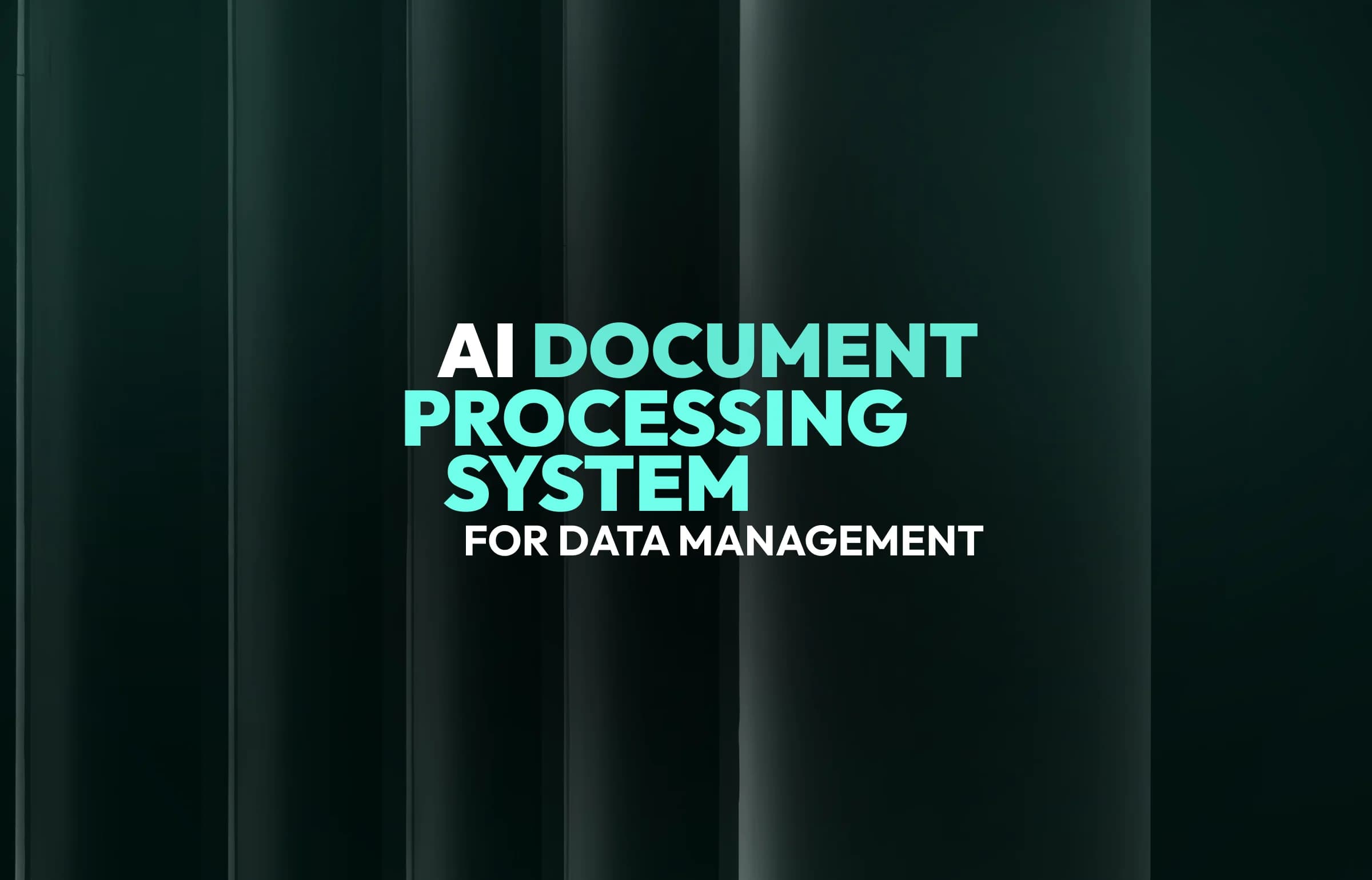
All How Does AI Improve Customer Experience (CX)?
Updated:April 28, 202510 min read
According to Zendesk, 59% of consumers expect companies to use the information collected from them to improve the customer experience. This includes multiple industries like retail, banking, travel, and many others. AI for CX allows companies to learn more about customer preferences, assess their mood after interacting with a brand, or make communication with a chatbot more “human”.
SapientPro’s engineers have developed multiple AI solutions and possess hands-on experience with all the benefits and pitfalls.
In this article, we’ll share expert knowledge on how companies are using AI to enhance the customer experience, the most popular AI customer service problems, and AI customer service costs.
What is AI in Customer Service?
AI in customer service combines artificial intelligence technologies to help businesses better serve their customers. AI in customer service meaning typically includes:
- Chatbots and virtual assistants that provide 24/7 immediate responses to common customer queries, freeing up human agents for more complex issues. For example, helping customers track orders or reset passwords;
- Natural language processing that understands customer messages and emails, routing them to appropriate departments or providing relevant information automatically;
- Personalization tools that analyze customer data to provide customized recommendations and support based on their history and preferences;
- Predictive analytics that can identify potential customer issues before they become issues and suggest early-stage solutions.
How does AI improve customer experience? These AI tools work alongside human agents. They handle routine tasks while allowing customer service representatives to focus on more nuanced situations requiring empathy and complex problem-solving.
Benefits of AI in Customer Service

Here are the key benefits of AI in customer experience:
- 24/7 availability. AI systems provide round-the-clock customer support without breaks. Customers get help anytime. This reduces wait times and improves satisfaction.
- Cost efficiency. Routine inquiries and tasks can be automated to reduce operational costs and handle more customer interactions.
- Consistent service quality. AI delivers uniform responses to similar queries, eliminating human inconsistencies. It ensures service quality remains stable across all interactions.
- Scalability. AI systems can handle multiple customer interactions simultaneously. They can easily scale up during peak periods without additional staffing costs.
- Improved human agent performance. AI helps human agents focus on cases that require empathy and critical thinking by automating routine activities.
- Personalization. AI can analyze customer history and preferences to deliver more personalized service experiences. This way, AI customer service benefits increase customer engagement and loyalty.
- Reduced human error. AI minimizes mistakes in routine tasks like data entry or information retrieval. Accuracy in customer service delivery is improved.
AI modernizes customer experience by offering 24/7 support, consistent quality, and personalized interactions. It's all done while reducing costs and scaling effortlessly. It helps human agents focus on what truly matters: empathy and complex problem-solving.
What AI Can Do to Improve Customer Experience?
Most companies, especially those from the B2C sector, are paying much attention to customer experience today. On the one hand, customers themselves increasingly want to see a more personalized approach and attention to their needs and emotions.
According to a report by SupperOffice, 86% of customers are willing to pay more for a good customer experience, while 61% abandon a brand's products or services because of a poor customer experience.
On the other hand, companies are realizing that qualitative analysis of customer requests, studying their emotional reactions to products, and more accurate behavior prediction give an advantage over competitors.
Companies have had a new way of dealing with customer experience in the last few years - various AI-based tools. Here are the answers to the question, “How can AI improve customer experience?”

Improving Chatbot Performance and Virtual AI Assistants
According to Khoros, 50% of users expect brands to answer questions within 3 hours. One tool that companies have long been using to answer users quickly is chatbots. Generative models such as ChatGPT help improve chatbot responses.
The development of AI also makes it possible to create more advanced virtual assistants. Natural Language Processing technologies allow virtual assistants to better understand user queries and provide answers that are almost indistinguishable from human speech.
Improving AI tools for voice search is also important, especially since the number and volume of purchases through voice queries is growing by hundreds of percent per year. In 2023, compared to 2021, the total number of purchases made by this method increased by more than 400%, amounting to $19.4 billion.
Customer Segmentation
Numerous businesses are using AI to improve customer experience this way. According to a survey by Sprout Social, 49% of executives believe AI will become a critical customer segmentation tool. Specifically, it can analyze their online behavior and identify groups to whom certain products can be offered. AI can more accurately identify potential customer categories and target advertising to them.
Analyzing Customer Sentiment
How are companies using AI for customer experience in this direction? AI tools can analyze social media posts and customer feedback in terms of sentiment — whether the customer liked the product or service. Such tools analyze the tone of posts based on the words used, speech patterns, emoji used, and other indicators.
Image Analysis and Computer Vision
Such technologies can be used, for example, to analyze users' photos and videos to understand how much they like a product or service. Another application is the study of competitors' offers. Analyzing Big Data from images and videos provides new opportunities to assess customer satisfaction, emotions, and preferences.
Computer vision technologies can improve the customer experience in offline stores. For example, they “check” what products are in the shopping cart. This speeds up service at the checkout and the store's exit.
Predictive Analytics
Predictive analytics tools allow you to make more accurate forecasts of customer behavior based on Big Data:
- Information about customers;
- Sales;
- Competitors' offers;
- Comments on social networks;
- Reactions to different advertising campaigns, etc.
For example, such tools analyze data on what the weather is like in this season in this place, how popular the place is with customers (based on both visits and sales, as well as data from social networks), what products they buy more often, etc. This helps make more accurate predictions on sales and customer numbers, as well as forecasting macro trends in the industry.
Dynamic Pricing
About 45% of executives from the Sprout Social survey said they plan to use AI to build dynamic pricing models. This is especially true for sectors where prices vary widely depending on season, day of the week, and other factors — such as hospitality and tourism.
AI can make dynamic pricing models more accurate by analyzing historical data on demand across seasons and days, competitor information, social media posts, and other information.
Content Personalization
Analyzing Big Data allows you to get to know your customers better. AI can be used to analyze a wide variety of customer data, including purchase history, website behavior, social media comments, and other actions. Based on this information, AI tools for customer experience can tailor more personalized offers.
This is especially true for massive marketplaces with millions of items, where a shopper will never see many relevant offers without personalized prompts tailored to their preferences.
Real-World Case Studies of AI Success in Customer Experience
All of these AI capabilities to improve customer experience can be applied in a variety of areas, from obvious options like retail to specialized industries like medicine. There are numerous companies using AI for customer experience. Let's explore them!
AI Customer Experience Examples in the Retail Industry
AI tools are particularly active in improving customer experience in retail. According to Grand View Research, the AI market in retail will reach $40.7 billion by 2030.
Walmart, the world's largest retailer, has supplemented the search in its app with generative AI tools that process queries in natural language. According to the developers' idea, this increases the personalization of the application and makes it more convenient for users.
Generative AI allows the customer to enter general descriptions (for example, “for a soccer party”) rather than exact product names or categories. Additionally, the app analyzes location, order history, and other data and gives recommendations for products and accessories for such a party.
Sam's Club, an American chain of stores, uses a computer vision system to simplify the checkout process for shoppers. The system recognizes items in shopping carts and compares them to what shoppers have paid for. This avoids lines for store employees to check out purchases and thus improves the customer's experience in the store.
Marketplaces are also actively using AI, for example, to improve recommendation systems, texting, and other tasks. Amazon has offered a generative AI tool to sellers — with its help, they can create listings faster. Such a tool uses a short description and a photo of a product to create an extended description of it, including functional features, color, and size.
Another development in retail is an AI-based virtual assistant. It helps to search for the necessary information in many texts, videos, and product descriptions. The user can ask the assistant questions in the form of an ordinary messenger chat — generative AI allows it to process queries and provide answers in natural language.
In addition, the tool uses RAG (Retrieval Augmented Generation) technology. When generating an answer, relevant information from additional sources is added to the user's query, which makes the answer more accurate and eliminates the possibility of “hallucinations”.
AI Customer Experience Examples in the Banking Industry
Banking is digitalizing faster than other industries. Many AI tools are already being used to improve the customer experience. For example, AI in customer support is hot within the banking industry.
Bank of America has introduced an AI tool that provides personalized recommendations on investment strategy, which, among other things, increases customer engagement. The bank is also improving its virtual assistant, Erica. Natural Language Processing and predictive analytics technologies help to better understand what a customer might be asking for.
N26, a major European mobile bank, needed to scale its customer service across multiple countries and languages. Traditional solutions couldn't meet their needs for customization and data security. They implemented Rasa's AI assistant in four weeks, deploying it on their secure cloud to handle complex customer conversations while maintaining full data control.
AI is also being used to assess customer emotions and sentiments. Fifth Third Bank, a Midwest regional bank, moved beyond limited customer satisfaction surveys by implementing NICE Enlighten AI and Nexidia Analytics. This AI solution analyzed customer emotions during calls and identified trends, enabling the bank to make data-driven decisions to improve customer experience.
AI Customer Experience Examples in the Travel Industry
Hotel chain Marriott Bonvoy uses generative AI tools to help users find a hotel. Customers can write text about which hotel they would like to stay at. For example, “I'd like to go to Paris or Vienna and live downtown” or “I need a beachfront house in the Caribbean that is suitable for a bachelorette party”. Generative AI analyzes this text and matches the customer with a hotel or cottage that best suits their request.
The Starbucks coffee chain has used the Deep Brew AI platform for years. First of all, it is a tool for predictive analytics of Big Data on the work of coffee shops. It allows for predicting the workload of coffee shops at different times and optimizing the volume of stocks and distribution of employees by points. In addition, Deep Brew helps prepare personalized offers for different customers, assess their preferences, make menu changes accordingly, and develop more effective marketing campaigns.
Diageo, one of the world's largest alcohol producers, also uses predictive analytics tools to evaluate the effectiveness of marketing campaigns. This tool predicts ROI based on the duration, period, target audience, and other campaign metrics. Based on the predictions, Diageo marketers can decide when and which campaigns will be more successful.
AI Customer Experience Examples in the Medicine Industry
The MedTech market has been actively developing in recent years. One promising direction is the digitalization of work with patients, and AI tools are also used here. According to Globe Newswire, the AI market in medicine will reach $613.81 billion by 2034.
Cloud platform Webex Connect, owned by developer Cisco, has introduced two AI tools for the medical field:
- Deep Medical. Deep Medical analyzes various data, including data related to human behavior, and predicts the likelihood that a person will miss a doctor's appointment. The tool reminds patients about appointments and helps them book an appointment for another day if necessary.
- SpinSci. SpinSci's AI-powered cloud platform brings different types of patient interactions together in one place. The platform stores referrals to doctors, appointment schedules, drug prescriptions, and other data and documents the patient's needs.
OSF Healthcare partnered with Fabric to implement Clare, an AI virtual assistant, on their website. Available 24/7, Clare helped patients check symptoms, schedule appointments, and find resources. It reduced call center volume by enabling self-service care options.
Cost of AI for Customer Service
SapientPro's team handles the complete AI implementation process using the best machine learning (ML) programming languages. Our team addresses all cost components:
- Technical integration with your existing systems;
- Staff training and onboarding programs;
- Regular maintenance and updates;
- Data security implementation;
- Custom feature development.
Our expertise helps you avoid hidden costs while maximizing the value of your AI software development investments across any service tier. Let's take a look at the average costs in the industry for these services.
Note: book a consultation with SapientPro's team to get a detailed estimate for your project!
Category | Cost Range | Details |
Initial Setup Costs | ||
| Basic Chatbot Solutions | $2,000 — $15,000 | Simple automated responses, basic customer interaction |
| Enterprise-level Systems | $30,000 — $250,000+ | Advanced features, multichannel support |
| Custom AI Development | $50,000 — $500,000+ | Fully customized solutions, unique business requirements |
Monthly Subscriptions | ||
| Small Business Solutions | $100 — $1,000 | Basic features, limited users |
| Mid-sized Business Platforms | $1,000 — $5,000 | More features, higher interaction volume |
| Enterprise Solutions | $5,000 — $50,000+ | Full feature set, unlimited interactions |
Hidden Costs | ||
$1,000 — $10,000 |
| |
Cost-Influencing Factors | ||
Depends on Requirements |
| |
Summary
We have discussed how AI is changing the customer experience. According to Accenture, data science leaders and over 1,600 C-suite executives are seeing 50% more revenue growth by using AI. Based on Cloud Talk’s data, 95% of brand interactions with customers will be AI-driven by 2025.
The impact of AI on customer experience is significant. Companies in various fields are already using AI to:
- Make interactions with customers more personalized;
- Better analyze and predict their behavior;
- Communicate with them better through chatbots and virtual assistants.
Start your AI customer service journey with SapientPro today. Contact us to discuss how we can help transform your customer service operations!



